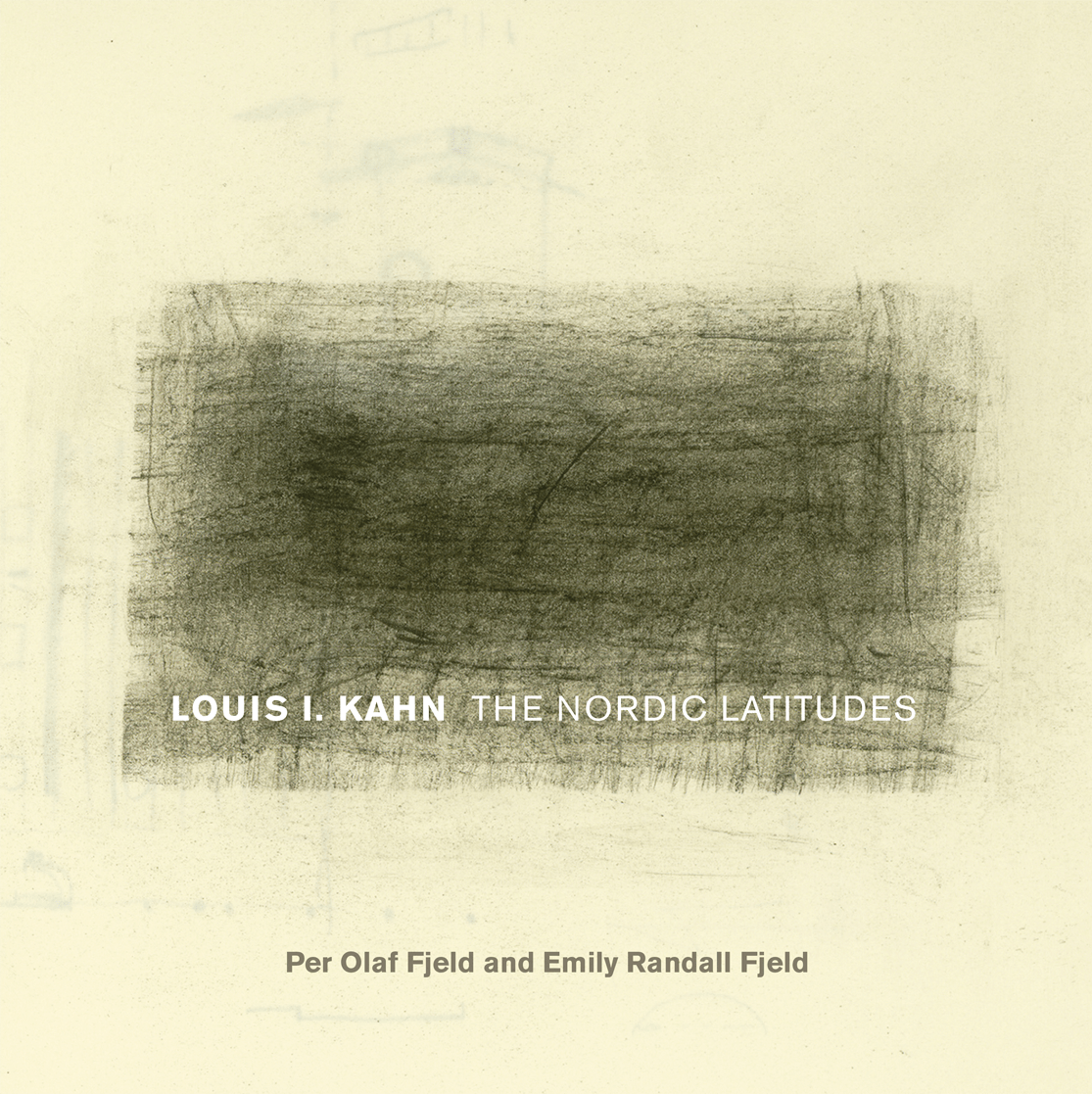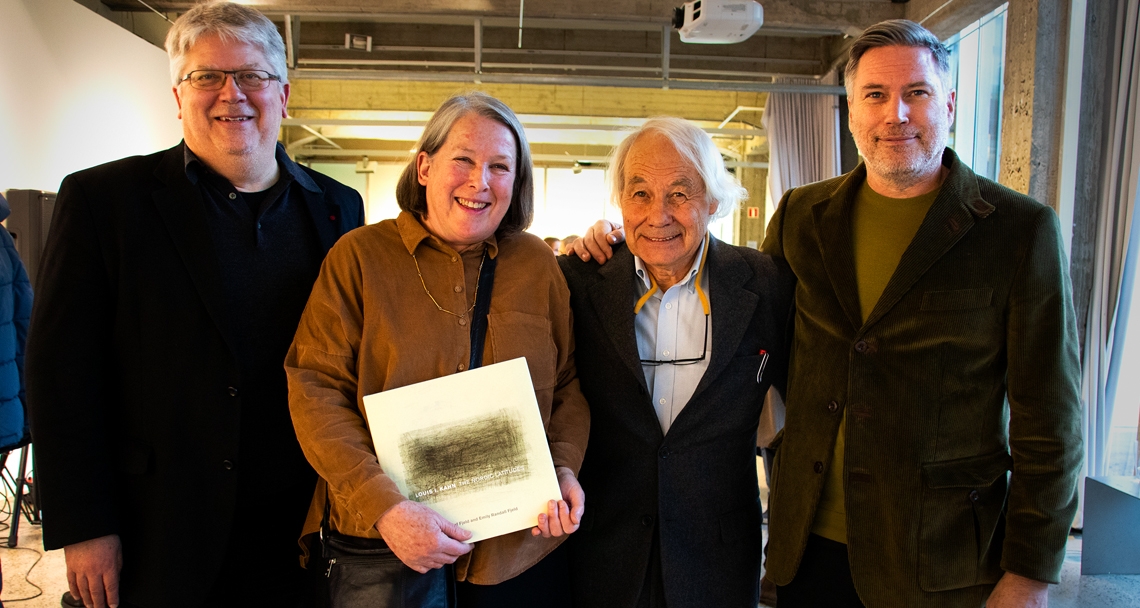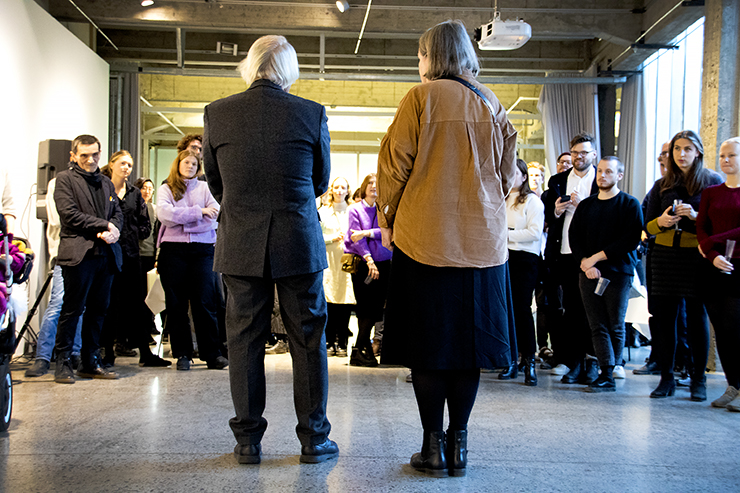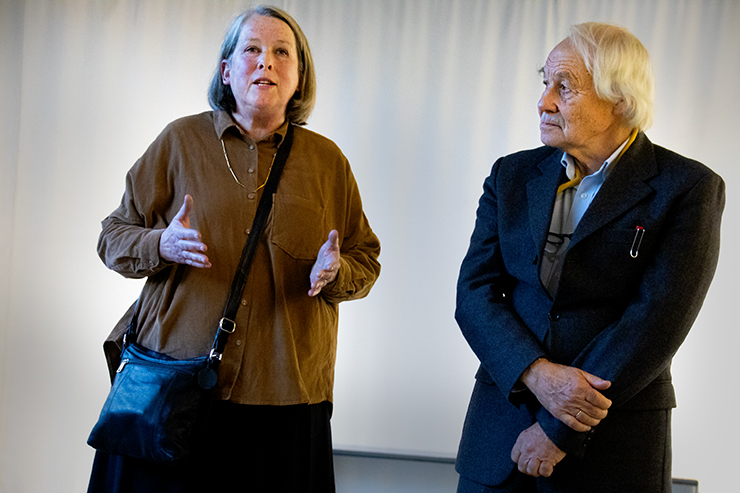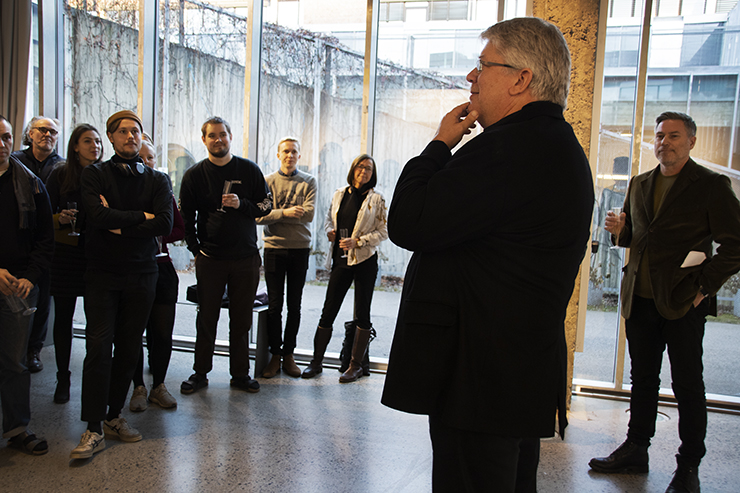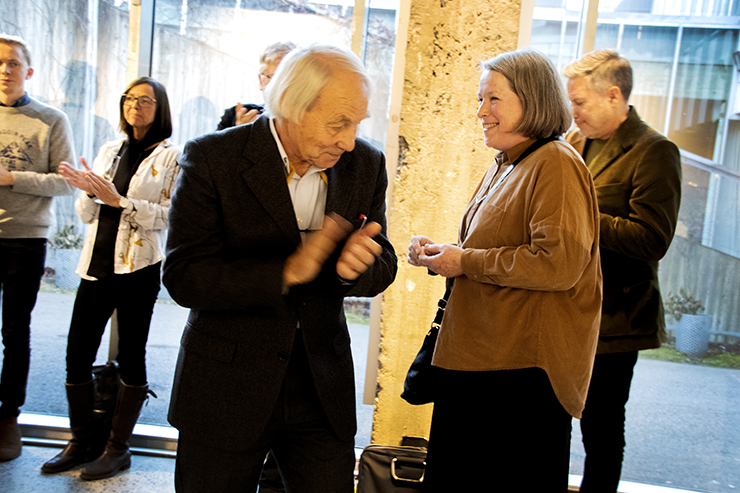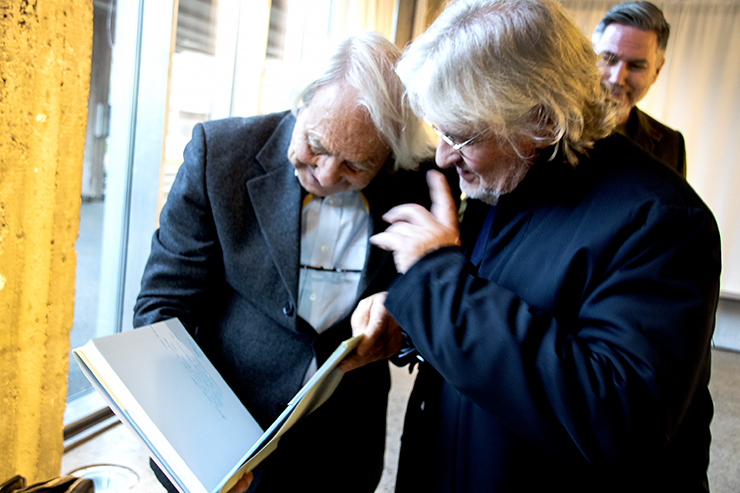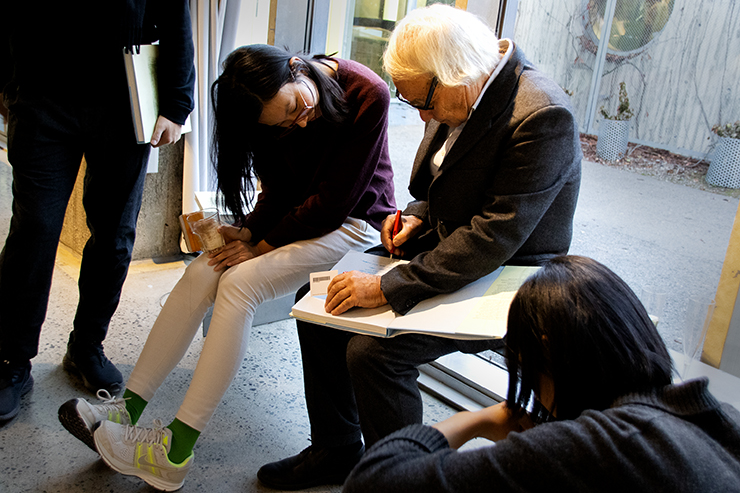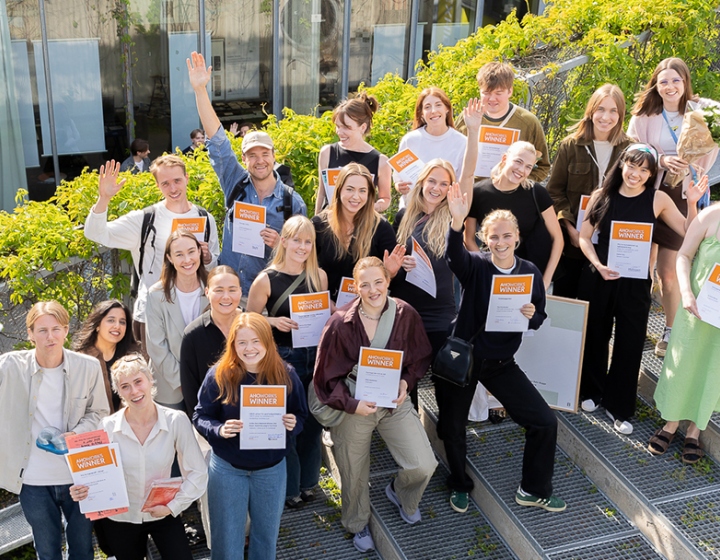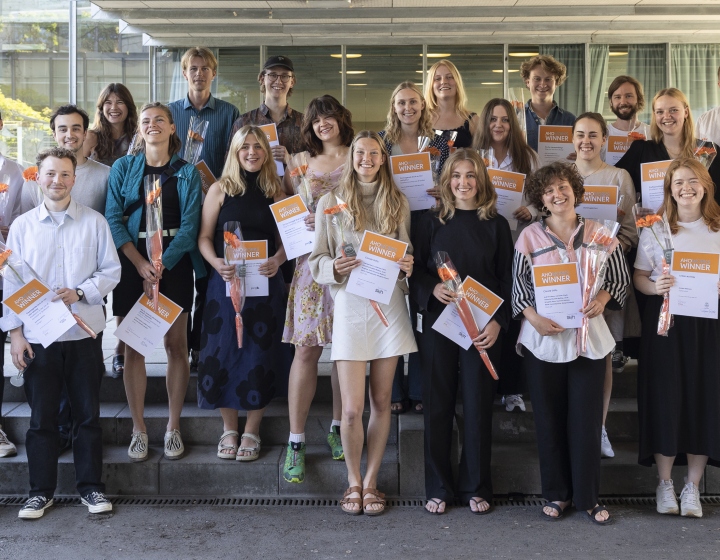New book about Louis I. Kahn launched at AHO
29. November, 2019
Congratultation to Per Olaf Fjeld and Emily Randall Fjeld on the release of "Louis I. Kahn: The Nordic Latitudes".
The event took place at the AHO Gallery with introductions by Peter MacKeith (Dean at Fay Jones School of Architecture and Design, University of Arkansas) and Thomas McQuillan (Head of Institute of Architecture at AHO) who said "Ultimately, this is part personal history, part confessional, part intellectual biography, but finally, and most importantly, in addition to a study of Kahn, it is an autobiography — an autobiography of the Fjelds and their engagement in architecture. And that is a very fine thing."
AHO immediately sold out all our copies of the book during the launch ...
The complete speech by Thomas McQuillan:
"I have three points to make, very briefly.
The first is about the dedicated and personal approach that is everywhere present in this book. It is very much a labor of love in the traditional sense — a work done for the love of the subject rather than for any reward. Through five years of investigation, travel, study and reflection, it takes up the figure of Louis Kahn through a personal lens. Per Olaf muses that when he met Kahn for the first time in the early 1970’s that the immediate connection that he felt for him may have been rooted in a shared experience of a childhood landscape. Citing Kahn, the authors tell us that “you can only learn that which is already within yourself — in lived experience”. And their lived experience underlies the narrative, as Per Olaf and Emmy meet in Philadelphia in 1972, while Per Olaf was attending Kahn’s masterclass and she the Philadelphia College of Art. Since then, they have worked together as a team, in architecture, art and life. So the book is not only the product of five years, but also of almost 50 years. And for me, this gives the term a labor of love a deeper meaning altogether.
Secondly: Biography is autobiography
The book is at once an attempt to trace the personal evolution of Kahn's own passage to clarity and the development of his ideas of the room, the institutions of man and the concepts of silence and light. The book looks at Kahn from angles that are novel and revelatory. But it is also a deep dive in what it means to have been there, then. The book shows student projects from the masterclass — and Per Olaf’s are rather good! As well as evocative images of a young Per Olaf and Emily, interspersed with notes taken at lectures, a review of the development of societal thought and public architecture in Scandinavia in the 1920’s and 1930’s, as well as an account of the meeting of Kahn and Arne Korsmo on a train bound for Rome in 1928, and their subsequent friendship over decades — in fact, Per Olaf notes that Kahn took him aside when he first arrived in Philadelphia to ask if he knew Korsmo — and was apparently disappointed when Per Olaf, educated in America, had to shake his head: No. Ultimately, this is part personal history, part confessional, part intellectual biography, but finally, and most importantly, in addition to a study of Kahn, it is an autobiography — an autobiography of the Fjelds and their engagement in architecture. And that is a very fine thing.
Thirdly: There is always new ground to be broken
It is very difficult to approach such a well-known and even mythic figure such as Louis Kahn. This becomes even more challenging if one does not limit the investigation to a particular building or archival subset, but extends to an overarching look at a life lived in the practice of architecture. We tend to let ourselves be captured by the conventions of academic research — about what can and can’t be said — and how. But this book is a signal that there is always new ground to be broken — new ways of approaching a subject, however already well-covered, of making a personal contribution. As one of the Kahn sketches notes: “One desires to be in order to express”. In this way, the book breaks new ground, redefines the way in which we can think about construction of an argument, the way it is built. And it is this joy and pursuit of expression that motivates the work: to be, to express. It is, finally, just such a desire to be through expression that makes this book such an important contribution.
